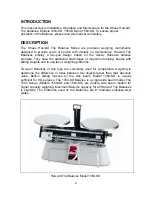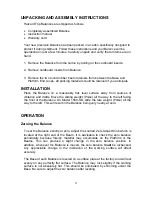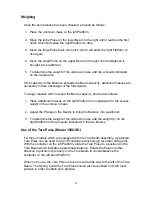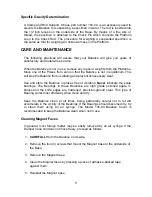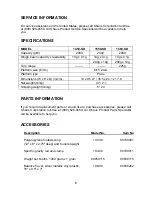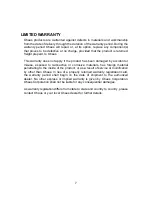
4
Weighing
Once the zero balance has been checked, proceed as follows:
1. Place the unknown mass on the left Platform.
2. Move the large Poise on the lower Beam to the right until it reaches the first
notch which will cause the right Platform to drop.
3. Move the large Poise back one notch, which will allow the right Platform to
rise again.
4. Move the small Poise on the upper Beam to the right until the Balance is
brought into equilibrium.
5. To determine the weight of the unknown mass, add the amounts indicated
on the two Beams.
If the capacity on the Balance exceeds the Beam capacity, additional masses are
necessary to take advantage of the full capacity.
To weigh masses which exceed the Beam capacity, proceed as follows:
1. Place additional masses on the right Platform to compensate for the excess
weight of the unknown mass.
2. Adjust the Poises on the Beams to bring the Balance into equilibrium.
3. To determine the weight of the unknown mass, add the weight (s) on the
right Platform to the amounts indicated on the two Beams.
Use of the Tare Poise (Model 1560-SD)
For those models which are equipped with the Tare Beam assembly, a patented
Tare Poise can be used to tare off containers which weigh less than 200 grams.
With the container on the left Platform, slide the Tare Poise to a position on the
Tare Beam which indicates approximate balance. Rotate the Poise in either
direction to position it precisely on the Tare Beam to counterbalance the
container on the left hand Platform.
When not in use, the Tare Poise is to be moved all the way to the left of the Tare
Beam. The Spring inside the Tare Poise should also be pushed to its left most
position in order to obtain zero balance.


